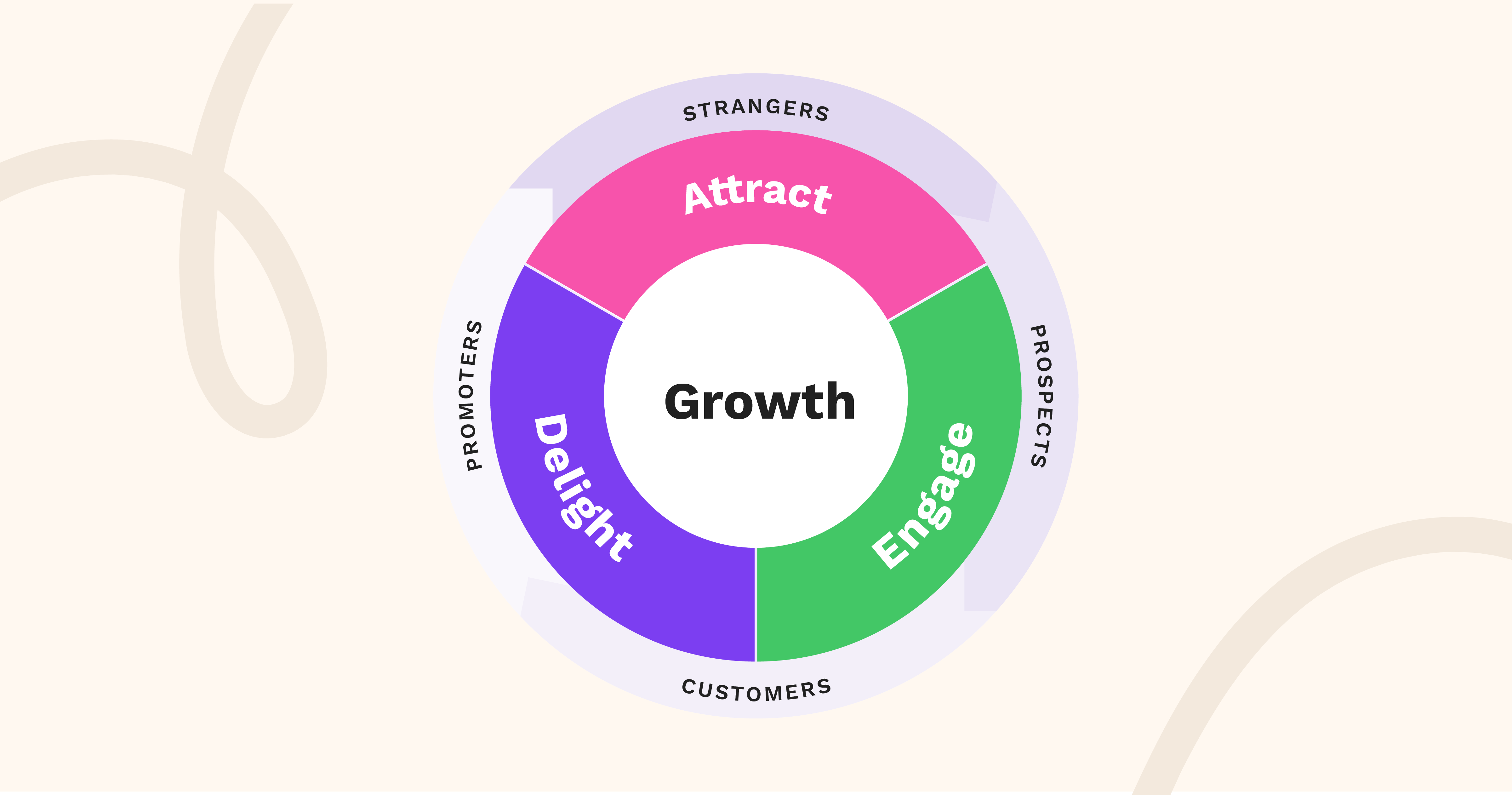
Prospects' opinions, what they want, their behaviours and demands are ever-changing. So, ensuring you have a flexible and broad outlook on turning prospects into consumers is a must to succeed. Do you currently still use the sales funnel? You may be losing out on leads, this system has not changed in many years, however, the way that your customers buy has.
Keep reading to find out why the sales funnel may be limiting you and why shifting to the HubSpot flywheel may be beneficial.
- Sales funnel overview
- HubSpot Flywheel overview
- HubSpot Flywheel vs Sales Funnel
- What about the sales funnel?
Sales funnel overview
There is a 6-step process to the sales funnel, steps include:
- Awareness
- Discovery
- Evaluation
- Intent
- Purchase
- Loyalty
Many businesses still rely on this, it is a tried and tested method, however, in today's landscape, it may not be as reliable as it once was. Not all customers start at the exact same point, such as the awareness stage, instead, they may join in the discovery or intent stage and the sales funnel does not account for that. Nor does it account for the back and forth of things, such as research.
With the methodology being so strict, it becomes disrupted if a customer does not follow the plan set out for them. With such a focus on output, the strategy will not be entirely effective if the input is not considered too.
HubSpot Flywheel overview
When it comes to the Flywheel, it takes the most effective elements of the sales funnel, whilst being more flexible to today's customer climate. Unlike the funnel, it does not have customers entering at one end and leaving at the other, the flywheel as the name suggests is based on an energy-efficient wheel. As the wheel spins, the momentum increases just like it would on a car, the momentum here being your delighted customers. If you attract, engage, and delight them, which are the key stages, speed will be increased.
Within the middle of the flywheel is growth, this relates to referrals from attracting, engaging and delighting your customers that leads to a larger business momentum. When the wheel turns, strangers become prospects, who become customers and customers become promoters and loyal consumers who effectively bring you more business.
HubSpot Flywheel vs Sales Funnel
So, what is the reason for companies moving away from the sales funnel and instead using the HubSpot Flywheel? Although both are based on a similar concept, the flywheel has built upon the original idea.
The sales funnel creates a division between teams, whereas the Flywheel aims to integrate teams into one system
Even though thinking about the customers is clearly important, understanding how your teams work together should also be considered. With a funnel, your teams are often divided into their own separate areas, whether that be the marketing or sales teams. However, for a process to truly work, teams should be integrated. This helps with growing the business and ensuring visibility across all areas. When it comes to the flywheel, all of the teams are integrated within one system, helping to support each other as well as improving the customer journey.
The funnel uses a strict roadmap, the Flywheel has prospects included no matter what stage they are in
In an ideal world, a point-from-point process may work like a funnel. But, nowadays people don't tend to go on a similar journey starting at one stage and all ending at the spot. Every customer journey is different and unique. This is clearly understood by the Flywheel so that the prospects can begin, leave and re-enter again whenever they please. This uses less invasive techniques, providing a more positive experience for customers and also allowing the sales team to focus on more qualified leads.
The Sales Funnel has a strong focus on output, the HubSpot Flywheel has more of a focus on input
With the sales funnel, it can be quite time-consuming to go through each lead as the funnel is open to all possibilities. This however does not mean that those leads will actually go anywhere. Some may become customers, but not all and these ones will drop off. With the flywheel, even if a prospect does not become a customer straight away, they may re-join later on. The aim is also to impress customers and turn them into loyal long-lasting consumers that also bring along other potential customers. This helps to reduce time and effort in finding new positive leads and leading them through the funnel.
What about the sales funnel?
The sales funnel is not necessarily a bad system and many businesses will continue to use it. However, since this system was created, a lot has changed in the way that buyers research and purchase products or services. Customer behaviours have changed dramatically, along with the way that business is conducted. With a range of new models surfacing, providing better opportunities for teams and increasing business. A new approach to customer journeys may be paramount.
Looking to drive more sales and win more customers? Speak to our team today - book a call.




